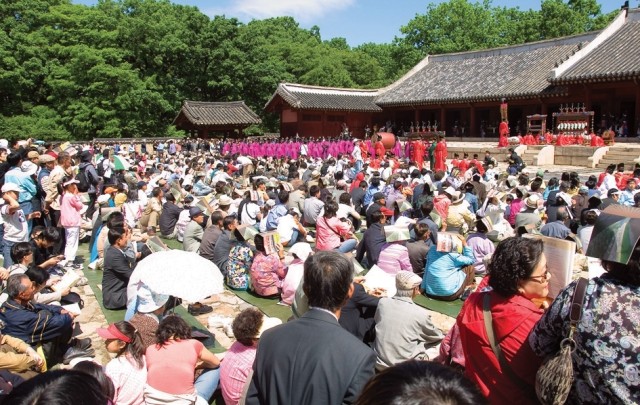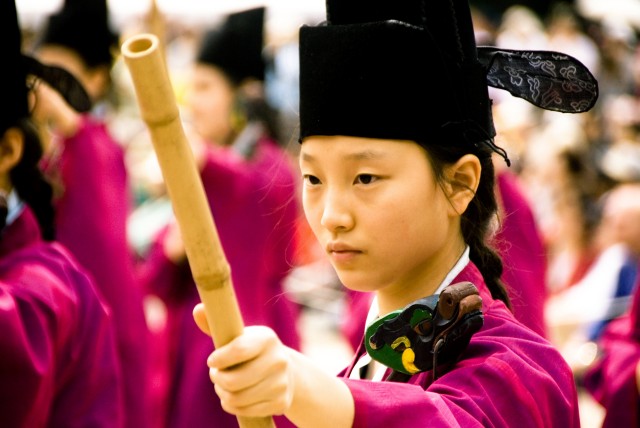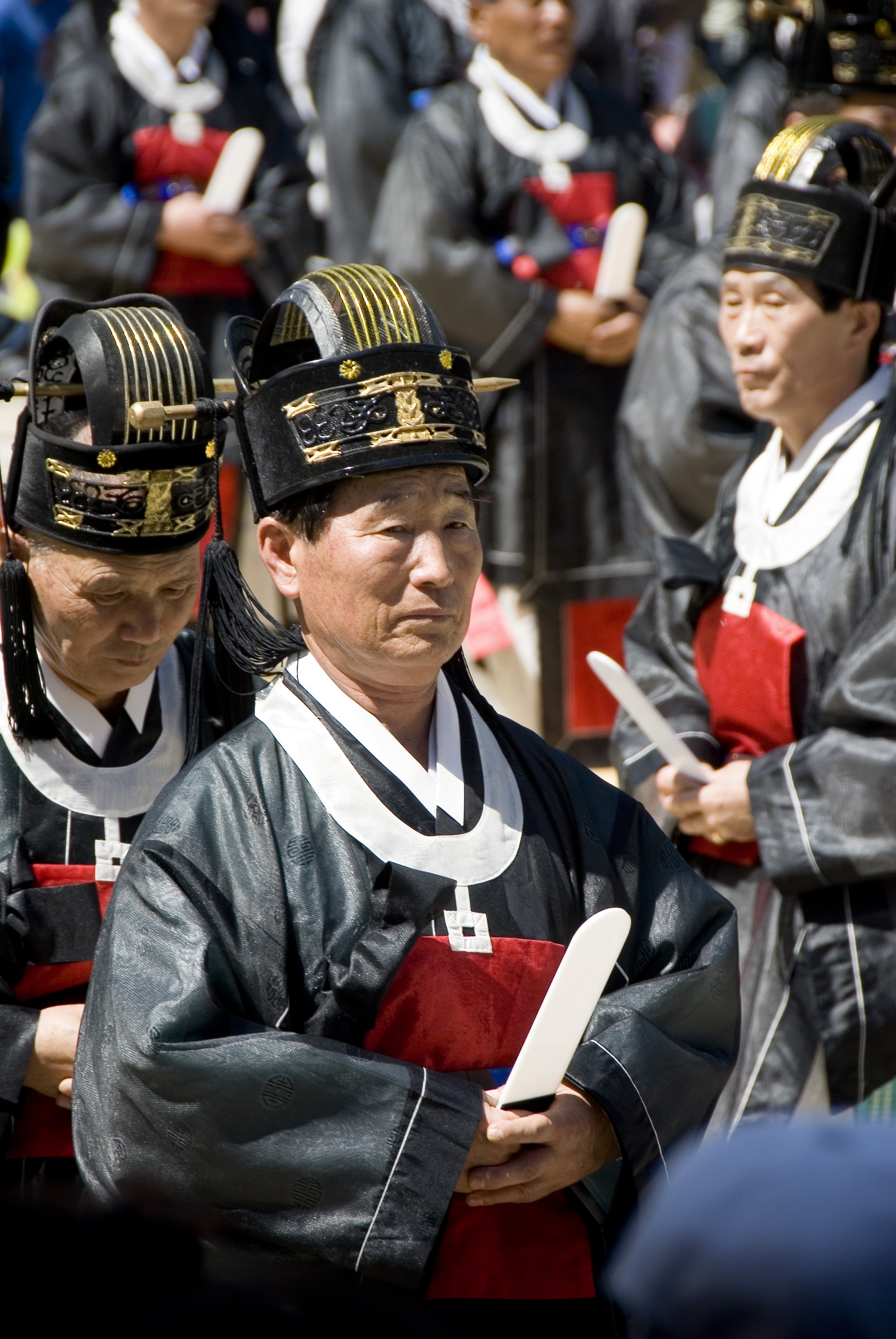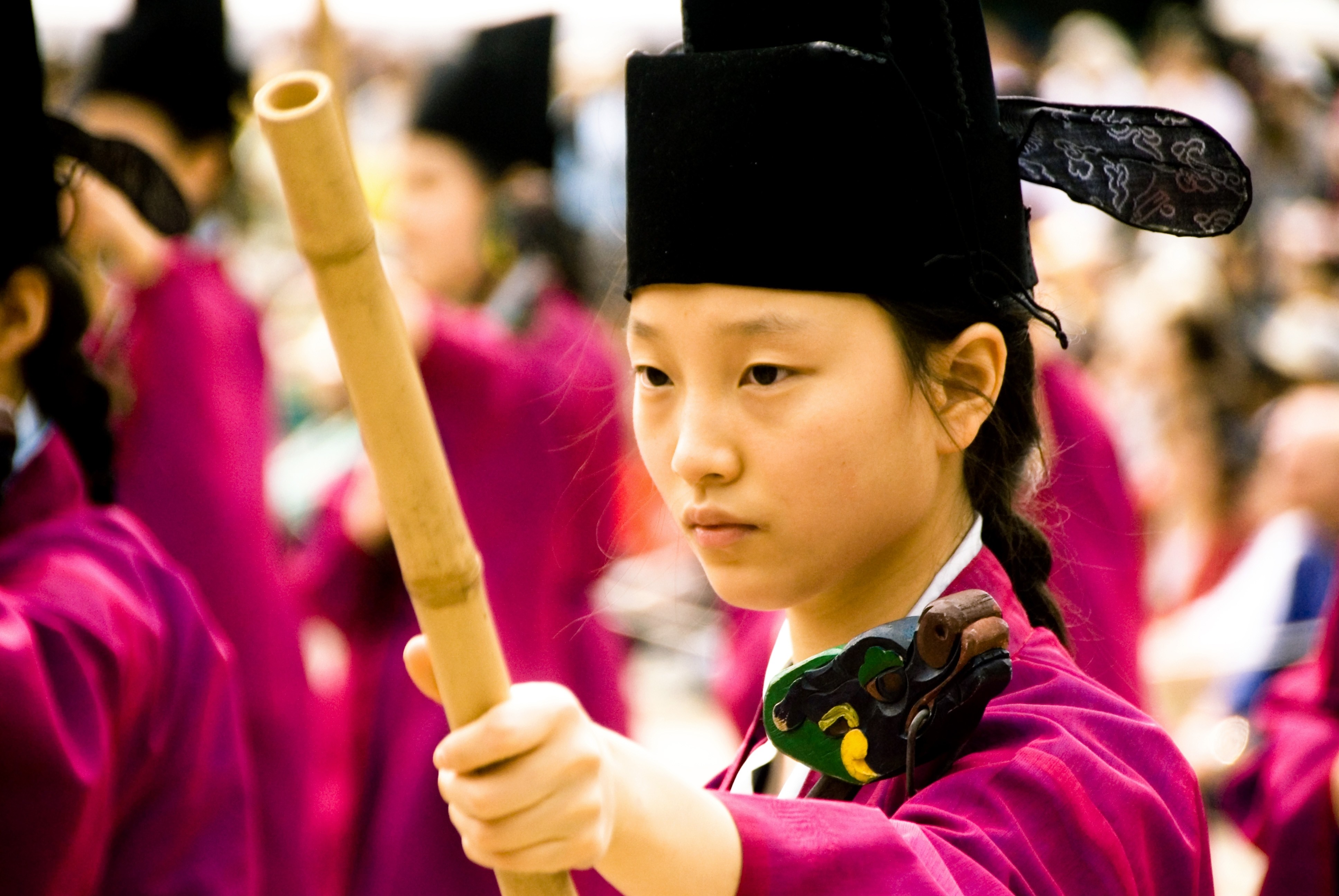SEOUL -- Hundreds of Koreans stand in regal colors to celebrate an ancient rite on grounds once traversed only by kings, queens and aristocrats. Each year in May, the Jongmyo Royal Ancestral Rite is a valued tradition in modern Korea.
Thousands of everyday Koreans gather to watch an elaborate memorial service offered to royal ancestors.
Canadian photographer Derek Winchester lives and works in Suwon. He shoots Korean cultural events as a hobby. Winchester said there was something different about this one.
"I feel like it was more real, like something that has been done every year continuously and not something read in a book, then recreated," he said.
Descendants from the Jeonju branch of the Lee family perform the memorial annually on the first Sunday of May. The ceremony honors the family's royal ancestors.
The Lee family once ruled the entire Korean peninsula. From the dynasty's founding in 1392, to its sunset in 1910, the Joseon royals set in motion a culture and tradition that stands to this day.
"I think traditions are something that are cherished in most cultures, and one thing that is really lacking in the west," Winchester said. "Traditions re-enforce a feeling of identity in my opinion. It also defines what the values of a particular culture are."
The rite consists of three parts. Participants usher in the spirits of the dead, entertain them and send them off.
During the ceremony, the spirits are offered wine. Lee family members burn incense, and offer the spirits gifts. Red-robed musicians play traditional instruments, while women in purple costumes dance in synchronicity.
The Jongmyo Shrine in central Seoul is home to the 49 "spirit tablets" of the Joseon Dynasty kings and queens. The shrine has been site of this ceremony for more than 600 years.
Although the Japanese banned the practice during the 1910-1945 occupation, and the early Republic of Korea government also nixed the ceremony, an historical preservation team called for the rite's return in 1969. By 1975, the Korean government fully backed the ceremony by naming it "Important Intangible Cultural Property No. 56."
Near the end of the ceremony, participants bow to the spirit tablets and offer solemn respect. Written prayer papers are burned in a kiln. Soon, the ceremony is over and the musicians and dancers depart.
"It is significant for Koreans because it takes up an essential part of Korean traditional culture," Korean President Lee Myung-bak wrote in congratulatory written remarks on the opening of the ritual when he was the Seoul mayor. "We have placed special emphasis on striking a right balance of modern and traditional aspects in this vibrant city."
Lee said traditions make Seoul a unique city in its own right.
"I hope this reenactment will again remind us of how important and valuable our traditional culture is," he said.
Throughout the year, reenactments occur at Korean cultural sites, such as Gyeongbok Palace and Doksu Palace. For information, visit the official http://english.visitkorea.or.kr/enu/index.kto.
Editor's note: This story is part of the USAG-Yongsan Welcome Guide. There are many things to do and see in Seoul.
Related Links:
Seoul offers cosmopolitan life
Yongsan Housing: Home is where the heart is
Spouse network eases move to Korea
Yongsan schools set high standards
Shopping with a Ration Control Card














Social Sharing